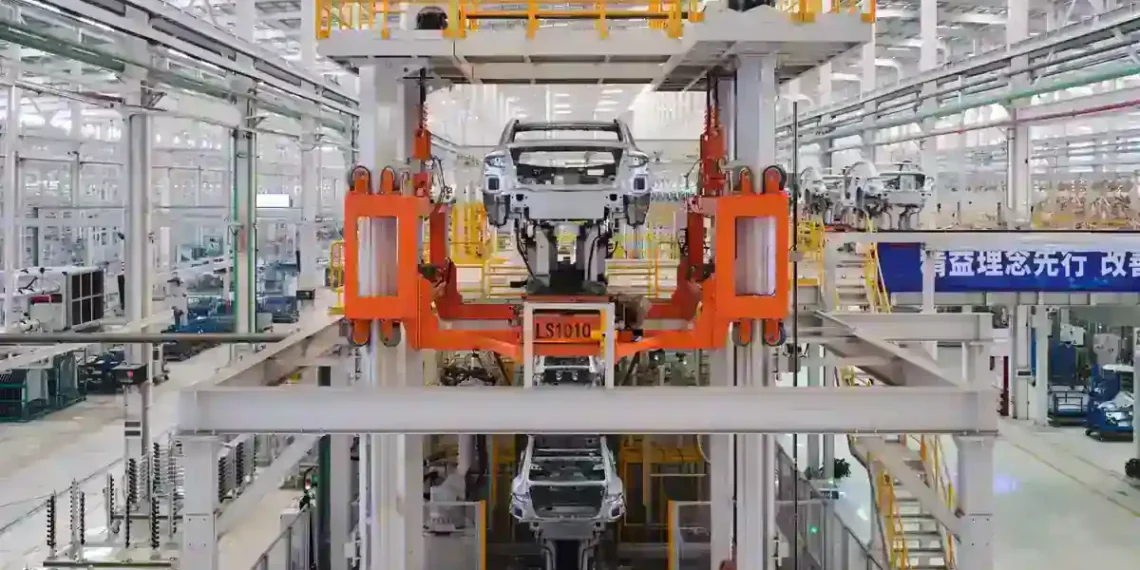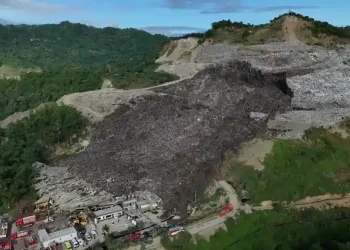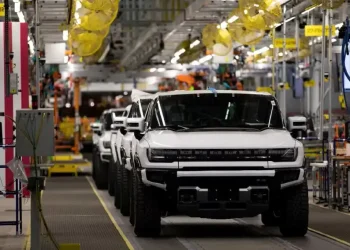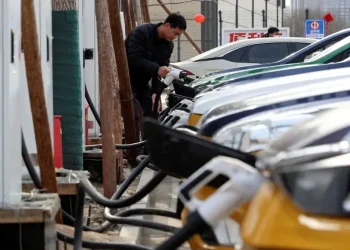Inside China’s Robot-Run EV Factory, a Photographer Captures a Future Without Workers
Renowned photographer Edward Burtynsky has spent decades documenting the industrial forces shaping our world—but his latest project feels like a glimpse into the future. During a rare visit to a massive electric vehicle (EV) factory near Shanghai, he captured something striking: a nearly human-free production floor.
“This is a factory built by humans but run by robots,” Burtynsky said in a recent Zoom call. “I think it’s a foreshadowing of where our future is.”
This high-tech, highly automated facility belongs to BYD, China’s leading EV manufacturer and Tesla’s fiercest global rival. In 2024 alone, BYD delivered 4.27 million vehicles—including 1.76 million electric and around 2.5 million hybrid cars—outpacing Tesla in total output.
A Factory With No Faces
Burtynsky, known for his haunting images of labor and industry, was granted access to BYD’s Changzhou plant through a personal connection with British architect Sir Norman Foster. Foster was guest-editing Domus magazine and wanted a compelling image to represent the future of transportation.
What Burtynsky found was a factory unlike those he had photographed in China during the 2000s—images that showed endless rows of workers building the country’s economic rise. This time, the workers were gone. Or nearly so.
“The humans are really just there to maintain the robots and keep the programs running clean,” he explained. In some corners of the facility, the level of automation is so complete, the factory could run without lights—a so-called “dark factory.”
It’s a stark contrast to the past, but also a reflection of BYD’s edge: automation drives down production costs, allowing it to offer EVs like the Seagull at just $10,000—a third of what Tesla charges for its base Model 3 in China.
A Powerful Image of Change
The standout image from his visit—titled “BYD Manufacturing Facility #1”—is visually hypnotic. It shows an unfinished vehicle on a production line, surrounded by towering steel beams that vanish into the distance, creating an almost spiritual symmetry.
“It had a cathedral-esque quality,” Burtynsky recalled.
But he also sees the image as part of a much larger narrative—one that stretches far beyond China’s borders.
From China to Africa: The New Face of Globalization
The photo is part of a larger series Burtynsky calls “China in Africa,” now on view at Hong Kong’s Flowers Gallery. The project explores what he sees as the next phase of globalization. Alongside ultra-modern factories in China, he juxtaposes Chinese-owned infrastructure in African nations—rail crossings, warehouses, and textile factories in places like Ethiopia.
The takeaway? While China’s factories have become more automated, the human labor hasn’t disappeared—it’s moved.
“They have literally secured their complete supply chain,” he said, pointing to BYD’s reported investments in lithium mines and mineral rights in countries like Brazil. It’s what Burtynsky describes as “complete vertical integration,” from raw materials to finished products.
A Complex Portrait of Progress
Burtynsky’s work often balances on the edge of awe and unease. Known for large-scale, aerial shots of landscapes transformed by human industry—like copper mines and salt flats—he doesn’t claim to take sides.
“I do it in a sort of deadpan aesthetic,” he said. “I’m not trying to manipulate you.”
His images aren’t designed to be moral judgments, but they do raise big questions. Take automation: is it dystopian, or simply efficient? Electric vehicles may be resource-intensive to build, but they also represent a step toward reducing fossil fuel dependence.
And as Burtynsky points out, not all jobs lost to automation are worth mourning. Before becoming a full-time photographer, he worked in car factories himself.
“You feel like you’re part of the machine,” he recalled. “You’re just being used for your human energy because they haven’t yet found a machine that can do what you’re doing.”
Finding Humanity in Machines
While the BYD plant might lack human workers, it’s not entirely devoid of human touch. In his photos, Burtynsky encourages viewers to look closer—at a grease stain on the factory floor, or a splash of oil on a pristine wall. These tiny imperfections, he says, are what ground the scene in reality.
“I’m always trying to point my camera into worlds we’re not all that familiar with,” he said. “And invite the kind of scrutiny that only a large format print can offer.”
In a world increasingly shaped by automation, Burtynsky’s lens doesn’t just document what’s changing—it asks us to consider what we’re leaving behind.
This article was rewritten by JournosNews.com based on verified reporting from trusted sources. The content has been independently reviewed, fact-checked, and edited for accuracy, neutrality, tone, and global readability in accordance with Google News and AdSense standards.
All opinions, quotes, or statements from contributors, experts, or sourced organizations do not necessarily reflect the views of JournosNews.com. JournosNews.com maintains full editorial independence from any external funders, sponsors, or organizations.
Stay informed with JournosNews.com — your trusted source for verified global reporting and in-depth analysis. Follow us on Google News, BlueSky, and X for real-time updates.














